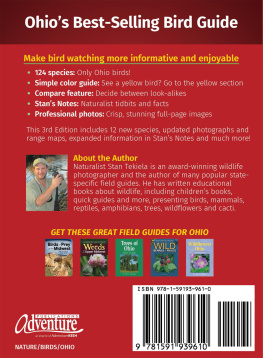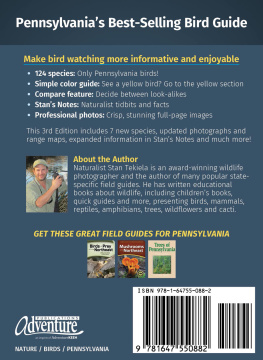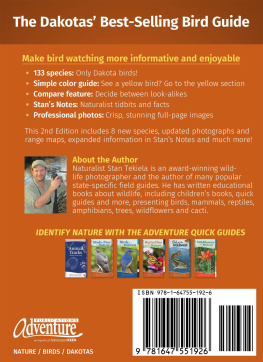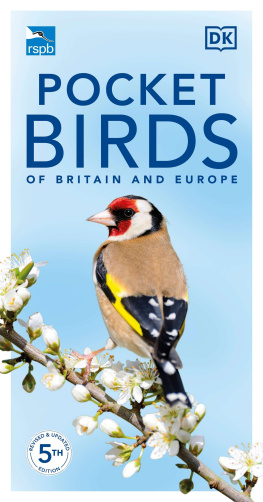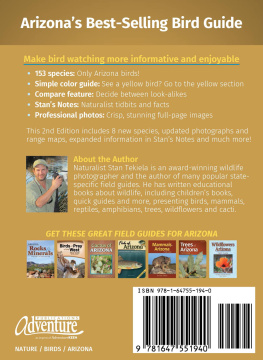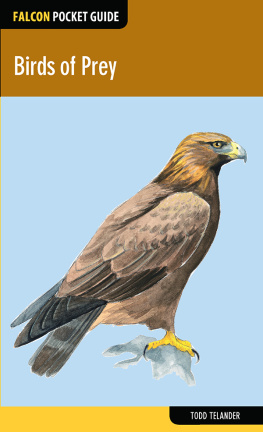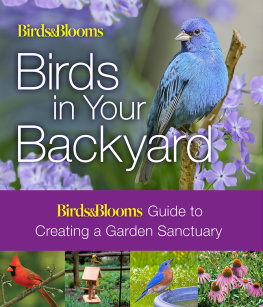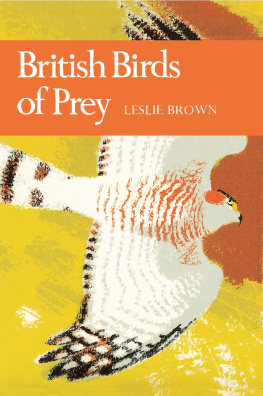FIELD GUIDE TO THE NEIGHBORHOOD BIRDS OF NEW YORK CITY

ALSO BY LESLIE DAY
FIELD GUIDE TO THE NATURAL WORLD OF NEW YORK CITY
FIELD GUIDE TO THE STREET TREES OF NEW YORK CITY
FIELD GUIDE TO THE NEIGHBORHOOD BIRDS OF NEW YORK CITY
LESLIE DAY

ILLUSTRATED BY TRUDY SMOKE
PHOTOGRAPHS BY BETH BERGMAN
FOREWORD BY DON RIEPE

2015 Johns Hopkins University Press
All rights reserved. Published 2015
Printed in China on acid-free paper
9 8 7 6 5 4 3 2 1
Johns Hopkins University Press
2715 North Charles Street
Baltimore, Maryland 21218-4363
www.press.jhu.edu
Library of Congress Cataloging-in-Publication Data
Day, Leslie, 1945 author.
Field guide to the neighborhood birds of New York City / Leslie Day ; illustrated by Trudy Smoke; photographs by Beth Bergman; foreword by Don Riepe
pages cm
Includes index.
ISBN 978-1-4214-1617-5 (hardcover : alk. paper) ISBN 1-4214-1617-4 (hardcover : alk. paper) ISBN 978-1-4214-1618-2 (pbk. : alk. paper) ISBN 1-4214-1618-2 (pbk. : alk. paper) ISBN 978-1-4214-1619-9 (electronic) ISBN 1-4214-1619-0 (electronic) 1. BirdsNew York (State)New YorkGuidebooks. 2. New York (N.Y.)Guidebooks. I. Smoke, Trudy. II. Bergman, Beth. III. Title.
QL684.N7D39 2015
598.09747'1dc232014024716
A catalog record for this book is available from the British Library.
All watercolor plates Trudy Smoke
All photographs Beth Bergman unless otherwise noted
Special discounts are available for bulk purchases of this book. For more information, please contact Special Sales at 410-516-6936 or .
Johns Hopkins University Press uses environmentally friendly book materials, including recycled text paper that is composed of at least 30 percent post-consumer waste, whenever possible.
Book design by Kimberly Glyder
CONTENTS
FOREWORD
M ost people think of New York City as a concrete jungle devoid of any bird life save pigeons, starlings, and house sparrows. Actually, quite the opposite is true as Leslie Days Field Guide to the Neighborhood Birds of New York City reveals. A quick thumb-through of her book brings to light the range and diversity of bird species found within the citys five boroughs.
Nestled between the Atlantic Ocean, Hudson River, and Long Island Sound, the city supports a great wealth of wildlife, especially birds. The many miles of shoreline and variety of upland parks provide ample nesting, wintering, and migratory stopover habitat for many species of shorebirds, waterfowl, and songbirds. Three hundred forty species of birds have been recorded at the Jamaica Bay Wildlife Refuge alone. Located along the Atlantic migratory flyway in the boroughs of Brooklyn and Queens, this 9,155-acre preserve is internationally renowned as a significant urban hotspot for birds and deemed a Critical Fish and Wildlife Habitat by New York State and an Important Bird Area by the National Audubon Society. The refuge harbors many unusual and colorful bird species, such as the glossy ibis, American oystercatcher, eastern towhee, northern shoveler, and brant goose. Elsewhere, the citys parks, bridges, and buildings are home to nesting red-tailed hawks, great horned owls, American kestrels, and peregrine falcons.
The five boroughs of the city provide habitats that range from mature upland woods, shrub thickets, open grasslands, and marshes, to miles of shoreline, sandy beaches, and open water. In spring and fall, literally millions of birds fly through and above the city during their migrations from wintering to breeding grounds and back. Many of the areas premier parks, including Central Park (Manhattan), Forest Park (Queens), Prospect Park (Brooklyn), Mount Loretto Nature Preserve (Staten Island), and Pelham Bay Park (Bronx), are considered some of the best birding sites in the northeastern United States. These parks are oases of green habitat for large concentrations of warblers, tanagers, grosbeaks, and many other colorful birds as they wing their way north and south each year.
This informative guide is made beautiful by the illustrations of Trudy Smoke and the amazing photographs of Beth Bergman and other local photographers. The writing and imagery capture the essence of the avian life that surrounds us. We are shown how to identify the birds, how they behave, and where and when we can see them. Leslie Day includes information about the many groups that work tirelessly to protect New York Citys birds. Everything you need to know about our birds and birding in New York City can be found in this portable book. This field guide will help beginning bird-watchers find their way, but it also belongs beside the chair near the feeder and in the library of every serious birder between the Rockaways and Riverdale.
D ON R IEPE
Jamaica Bay Guardian
American Littoral Society
ACKNOWLEDGMENTS
T he beauty of birds as they fly, feed, bathe, care for one another, and raise their young has been captured by the photographers and artists who shared their work with me. Two extraordinary women are foremost among them: my lifelong friend, the talented illustrator Trudy Smoke, whose day job is linguistics professor at Hunter College CUNY, where she has taught for more than forty years, and Beth Bergman, who, when she is not photographing the Metropolitan Opera Company, which she has done for more than forty years, is a passionate avian photographer. I am deeply indebted to the following for their spectacular photographs: Don Riepe, Guardian of the Jamaica Bay Wildlife Refuge; Jenny Mastantuono, wildlife biologist, USDA Wildlife Services; Laura Meyers, New York City bird photographer; David Goldemberg; Marge Pangione, Sammie Smith, and bird bloggers James OBrien and D. Bruce Yolton.
I could not have done without the help of Glenn Phillips and his encyclopedic knowledge of birds. As former Executive Director of New York City Audubon, Glenn supported me in countless ways, among them, giving me access to his hard-working and talented staff: Susan Elbin, ornithologist and Director of Conservation and Science; Tod Winston, communications manager, research associate, and one of the most accurate bird identification people I know; and Kaitlyn Parkins, a researcher on New York City conservation issues.
My everlasting gratitude goes to Rob Jett, the City Birder, for fact checking all my species accounts. He is the fastest, most accurate fact-checker around! Many, many thanks to the following for checking the neighborhoods that surround the birding hotspots of the five boroughs: Linda Dallam for reviewing the Bronx neighborhoods; Andrew Baksh and Don Riepe for checking the Queens neighborhoods; John Kilcullen, Conference House Park Director, for checking the Staten Island neighborhoods; and Rob Jett for checking the Brooklyn neighborhoods.
My eternal gratitude to New York City wildlife rehabilitators Ritamary McMahon, founder of the Wild Bird Fund, and Cathy and Bobby Horvath, founders of Wildlife in Need of Rescue and Rehabilitation, for their lifetime devotion to hurt and orphaned animals and for their patience in answering my many questions. I am grateful to New York City Urban Park Ranger Rob Mastrianni for the work he and other rangers are doing to bring injured wildlife to those who can help them survive.




